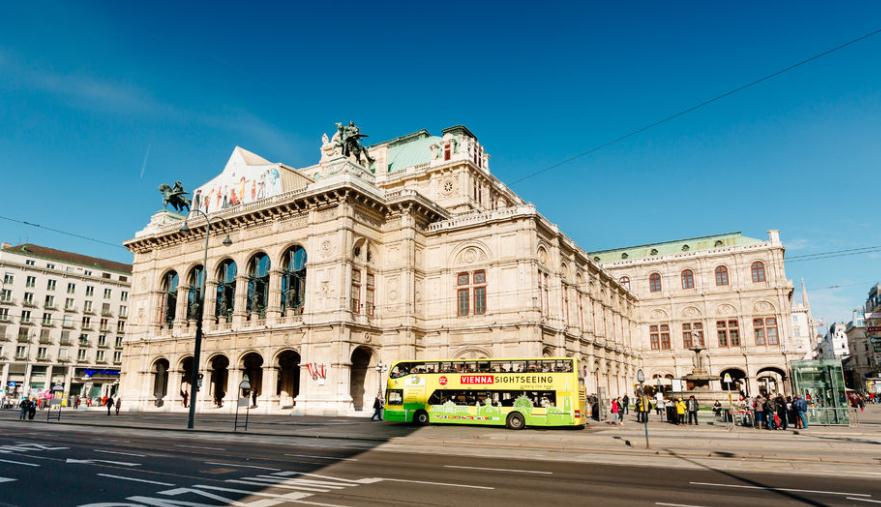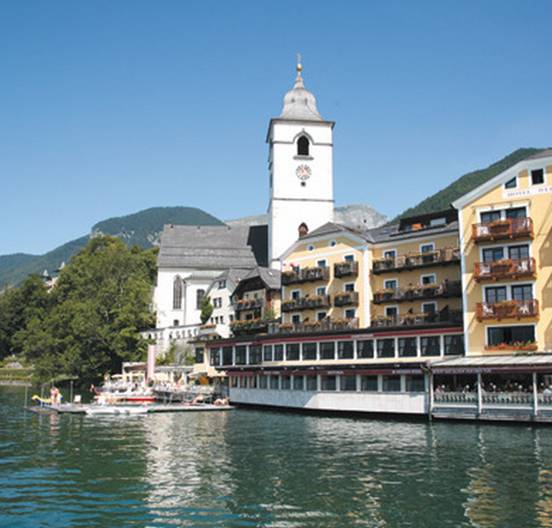
A Grand Central European Tour: Vienna, Budapest, Prague, Berlin, Frankfurt, Zurich, Lucerne, Liechtenstein, Munich, and the Austrian-German Border
This itinerary weaves through the historic and cultural heart of Europe, connecting imperial capitals, medieval towns, and breathtaking Alpine landscapes. It's a journey through the former domains of the Habsburg Empire and beyond, offering a rich tapestry of art, history, architecture, and cuisine.
Itinerary Overview
This is a circular route, conveniently starting and ending in Vienna. The journey is best undertaken by a combination of trains and regional buses, as Europe's rail network is exceptionally efficient and scenic. The order is designed for logical geographical progression and efficient travel time.
Start: Vienna (Austria)
Leg 1: Vienna to Budapest (Train ~2.5-3 hours)
Leg 2: Budapest to Prague (Train ~6.5-7 hours / Night Train available)
Leg 3: Prague to Berlin (Train ~4.5 hours)
Leg 4: Berlin to Frankfurt (Train ~4 hours)
Leg 5: Frankfurt to Zurich (Train ~4 hours)
Leg 6: Zurich to Lucerne (Train ~45-60 minutes)
Leg 7: Lucerne to Liechtenstein (Train/Bus ~2 hours)
Leg 8: Liechtenstein to Munich (Train/Bus ~3.5-4 hours)
Leg 9: Munich to Austrian-German Border Town (e.g., Salzburg or Berchtesgaden) (Train ~1.5-2 hours)
Leg 10: Border Town to Vienna (Train ~2.5-3 hours)
Vienna (Wien), Austria
The imperial capital of the Habsburg monarchy, Vienna is a city of exquisite elegance, grand palaces, and a deep-rooted musical heritage.
Key Attractions
Schönbrunn Palace: The magnificent summer residence of the Habsburgs. Don't miss the lavish state rooms, the vast gardens, and the Gloriette structure offering panoramic city views.
St. Stephen's Cathedral (Stephansdom): The Gothic masterpiece at the heart of the city. Climb the South Tower for a stunning view over the old town.
Hofburg Palace: The former imperial winter palace complex. It now houses the Austrian president's office, the Sisi Museum (dedicated to Empress Elisabeth), and the Imperial Apartments.
Belvedere Palace: A beautiful Baroque palace complex housing an art museum with the world's largest collection of Gustav Klimt paintings, including "The Kiss."
Vienna State Opera (Wiener Staatsoper): Attend a world-class opera or ballet performance, or take a guided tour during the day.
Culinary Delights
Wiener Schnitzel: A thin, breaded, and fried veal cutlet. Traditionally served with potato salad or parsley potatoes.
Sacher-Torte: The famous dense chocolate cake with a layer of apricot jam, invented at the Hotel Sacher.
Apfelstrudel: A classic Viennese apple strudel, best enjoyed warm with a dollop of vanilla sauce (Vanillesauce).
Visit a Coffeehouse: Experience the Viennese coffeehouse culture. Order a Melange (similar to a cappuccino) and spend hours reading the newspaper.
Travel Tips & Local Insights
Vienna City Card offers discounts on attractions and unlimited public transport for 24, 48, or 72 hours.
- For a unique experience, attend a concert in one of the smaller palaces, like Palais Pallavicini, which can be more intimate than the large concert halls.
- Public transportation (U-Bahn, trams, buses) is punctual, clean, and comprehensive.
Budapest, Hungary
Often called the "Queen of the Danube," Budapest is actually two cities in one: hilly Buda and flat Pest, connected by a series of elegant bridges.
Key Attractions
Buda Castle & Castle Hill: A UNESCO World Heritage site housing the Hungarian National Gallery and the Budapest History Museum. The panoramic views of Pest across the river are unparalleled.
Fisherman's Bastion: A fairytale-like terrace with neo-Gothic and neo-Romanesque arches and towers, offering the best photo opportunities of the Parliament building.
Hungarian Parliament Building: An iconic Gothic Revival masterpiece on the banks of the Danube. Guided tours are required to see the interior, including the Holy Crown of Hungary.
Széchenyi Thermal Bath: One of the largest spa complexes in Europe. Relax in the outdoor thermal pools, a quintessential Budapest experience, even in winter.
St. Stephen's Basilica: The largest church in Budapest. You can go up to the dome for a 360-degree view of the city.
Culinary Delights
Goulash (Gulyás): A hearty meat and vegetable stew, seasoned with paprika. It's more of a soup than a stew in its traditional form.
Lángos: Deep-fried dough topped with garlic, sour cream, and cheese—a popular and delicious street food.
Chicken Paprikash (Csirkepaprikás): Chicken simmered in a creamy paprika sauce, typically served with small dumplings (nokedli).
Tokaji Aszú: A world-renowned sweet dessert wine from Hungary.
Travel Tips & Local Insights
- Purchase a travel card or book of tickets for the efficient public transport system.
Chain Bridge at night for a magical view of the illuminated castle and parliament.
- The "ruin bars" in the Jewish Quarter are a unique cultural phenomenon—eclectic bars set up in abandoned buildings and courtyards. Szimpla Kert is the most famous.
Prague (Praha), Czech Republic
The "City of a Hundred Spires," Prague is a remarkably well-preserved medieval gem, with a storybook old town and a vibrant modern energy.
Key Attractions
Prague Castle: According to the Guinness Book of Records, this is the largest ancient castle complex in the world. Don't miss St. Vitus Cathedral, Golden Lane, and the Old Royal Palace.
Charles Bridge: This 14th-century stone bridge, adorned with Baroque statues, is the city's most iconic landmark. Visit early in the morning to avoid the crowds.
Old Town Square (Staroměstské náměstí): The heart of historic Prague. Key sights here include the Astronomical Clock (Orloj), which puts on a show every hour, and the Týn Church.
Jewish Quarter (Josefov): Explore the synagogues and the haunting Old Jewish Cemetery, which tells the story of Prague's Jewish community over centuries.
Petřín Hill: A large park perfect for a stroll. You can climb the Petřín Lookout Tower (a smaller version of the Eiffel Tower) for fantastic views.
Culinary Delights
Roast Pork with Dumplings and Sauerkraut (Vepřo-knedlo-zelo):The Czech national dish.
Trdelník:A sweet pastry dough wrapped around a stick, grilled, and topped with sugar and walnuts. While popular with tourists, it's not a deeply traditional Czech food.
Svičková:Marinated sirloin steak served with a creamy vegetable sauce, cranberry compote, and dumplings.
Czech Beer (Pivo):The Czech Republic has the highest beer consumption per capita in the world. Sample famous brands like Pilsner Urquell or Budvar.
Travel Tips & Local Insights
The city is very walkable, but trams are a great way to cover longer distances quickly.
Prague can be extremely crowded, especially in the summer. Book castle tickets online in advance to skip long queues.
For a less touristy experience, cross the river to the Letná Park for a beer garden with a stunning view of the city.
The Alpine Interlude: Zurich & Lucerne, Switzerland
Austrian-German Border Town: Salzburg or Berchtesgaden
The choice between these two towns offers either a dose of musical history or pristine natural beauty—both are excellent options before returning to Vienna.
The Option: Salzburg, Austria
"The Sound of Music" & Mozart's Birthplace
A Baroque city nestled against the Alps, Salzburg is famous as the birthplace of Wolfgang Amadeus Mozart and the setting for "The Sound of Music."



